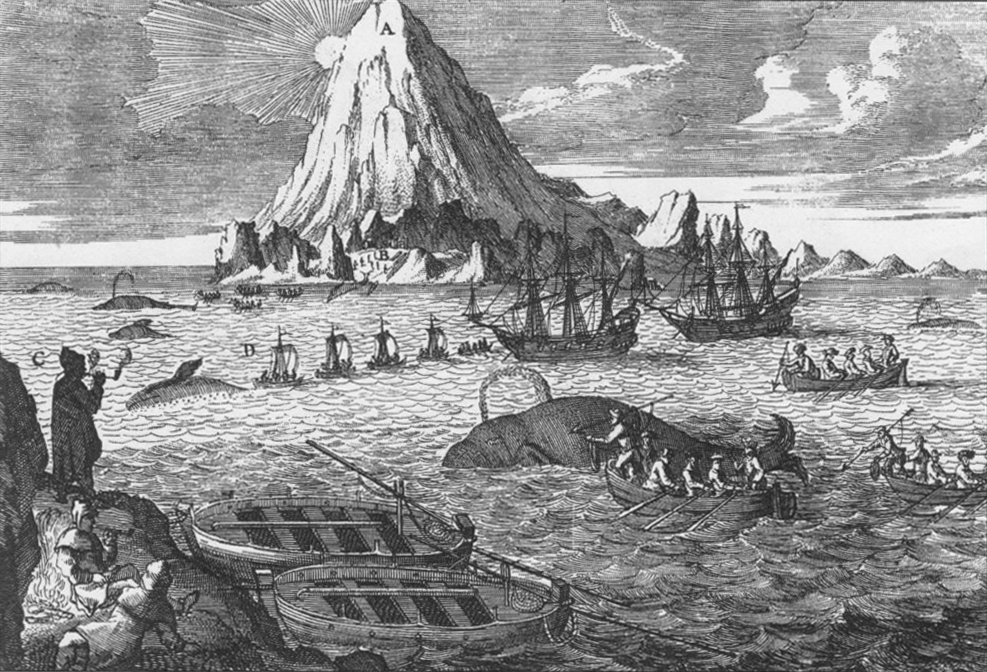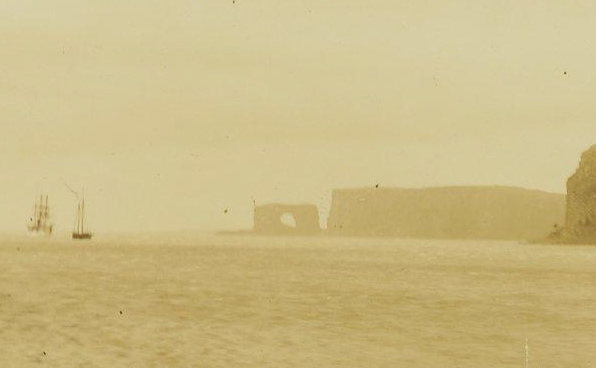|
Antarctic (ship)
''Antarctic'' was a Swedish steamship built in Drammen, Norway, in 1871. She was used on several research expeditions to the Arctic region and to Antarctica from 1893 to 1903. In 1895 the first confirmed landing on the mainland of Antarctica was made from this ship. The ship ''Antarctic'' was a barque with three masts and equipped with a steam engine, built in 1871 at Holmen in Drammen in Norway under the name ''Cap Nor''. Alfred Nathorst, ”Två Somrar i Norra Ishafvet”, first part (in Swedish), 1900, accessdate=2010-12-10 Henrik Bull, ”The cruise of the "Antarctic" to the South Polar regions”, 1896, accessdate=2010-12-10 [...More Info...] [...Related Items...] OR: [Wikipedia] [Google] [Baidu] |
Cape Adare
Cape Adare is a prominent cape of black basalt forming the northern tip of the Adare Peninsula and the north-easternmost extremity of Victoria Land, East Antarctica. It is the site of the first confirmed landing on the Antarctic mainland—undertaken from ''Antarctic'' in 1895—and the first base on the Antarctic mainland—established by ''Southern Cross'' in 1899. On both occasions an important role was played by Carstens Borchgrevink. Description Marking the north end of Borchgrevink Coast and the west end of Pennell Coast, the cape separates the Ross Sea to the east from the Southern Ocean to the west, and is backed by the high Admiralty Mountains. Cape Adare was an important landing site and base camp during early Antarctic exploration. Off the coast to the northeast are the Adare Seamounts and the Adare Trough. History Captain James Ross discovered Cape Adare in January 1841 and named it after his friend the Viscount Adare (the title is derived from A ... [...More Info...] [...Related Items...] OR: [Wikipedia] [Google] [Baidu] |
Tromsø
Tromsø is a List of towns and cities in Norway, city in Tromsø Municipality in Troms county, Norway. The city is the administrative centre of the municipality as well as the administrative centre of Troms county. The city is located on the island of Tromsøya which sits in the Tromsøysundet strait, just off the mainland of Northern Norway. The mainland suburb of Tromsdalen is connected to the city centre on Tromsøya by the Tromsø Bridge and the Tromsøysund Tunnel. The suburb of Kvaløysletta on the island of Kvaløya (Tromsø), Kvaløya is connected to the city centre by the Sandnessund Bridge. The city centre contains the highest number of old wooden houses in Northern Norway, the oldest dating from 1789. Tromsø is a cultural hub for the region, with several festivals taking place in the summer. The city has a population of 41,915 (2023) and a population density of . Names and etymology The city of Tromsø is named after the island of Tromsøya, on which it stands. Th ... [...More Info...] [...Related Items...] OR: [Wikipedia] [Google] [Baidu] |
Whale Hunting
Whaling is the hunting of whales for their products such as meat and blubber, which can be turned into a type of oil that was important in the Industrial Revolution. Whaling was practiced as an organized industry as early as 875 AD. By the 16th century, it had become the principal industry in the Basque coastal regions of Spain and France. The whaling industry spread throughout the world and became very profitable in terms of trade and resources. Some regions of the world's oceans, along the animals' migration routes, had a particularly dense whale population and became targets for large concentrations of whaling ships, and the industry continued to grow well into the 20th century. The depletion of some whale species to near extinction led to the banning of whaling in many countries by 1969 and to an international cessation of whaling as an industry in the late 1980s. Archaeological evidence suggests the earliest known forms of whaling date to at least 3000 BC, practiced by the ... [...More Info...] [...Related Items...] OR: [Wikipedia] [Google] [Baidu] |
Ross Sea
The Ross Sea is a deep bay of the Southern Ocean in Antarctica, between Victoria Land and Marie Byrd Land and within the Ross Embayment, and is the southernmost sea on Earth. It derives its name from the British explorer James Clark Ross who visited this area in 1841. To the west of the sea lies Ross Island and Victoria Land, to the east Roosevelt Island and Edward VII Peninsula in Marie Byrd Land, while the southernmost part is covered by the Ross Ice Shelf, and is about from the South Pole. Its boundaries and area have been defined by the New Zealand National Institute of Water and Atmospheric Research as having an area of . The circulation of the Ross Sea is dominated by a wind-driven ocean gyre and the flow is strongly influenced by three submarine ridges that run from southwest to northeast. The circumpolar deep water current is a relatively warm, salty and nutrient-rich water mass that flows onto the continental shelf at certain locations. The Ross Sea is covered ... [...More Info...] [...Related Items...] OR: [Wikipedia] [Google] [Baidu] |
Melbourne
Melbourne ( , ; Boonwurrung language, Boonwurrung/ or ) is the List of Australian capital cities, capital and List of cities in Australia by population, most populous city of the States and territories of Australia, Australian state of Victoria (state), Victoria, and the second most-populous city in Australia, after Sydney. The city's name generally refers to a metropolitan area also known as Greater Melbourne, comprising an urban agglomeration of Local Government Areas of Victoria#Municipalities of Greater Melbourne, 31 local government areas. The name is also used to specifically refer to the local government area named City of Melbourne, whose area is centred on the Melbourne central business district and some immediate surrounds. The metropolis occupies much of the northern and eastern coastlines of Port Phillip Bay and spreads into the Mornington Peninsula, part of West Gippsland, as well as the hinterlands towards the Yarra Valley, the Dandenong Ranges, and the Macedon R ... [...More Info...] [...Related Items...] OR: [Wikipedia] [Google] [Baidu] |
Kerguelen Islands
The Kerguelen Islands ( or ; in French commonly ' but officially ', ), also known as the Desolation Islands (' in French), are a group of islands in the subantarctic, sub-Antarctic region. They are among the Extremes on Earth#Remoteness, most isolated places on Earth, with the closest territory being the Heard Island and McDonald Islands territory of Australia located at roughly , and the nearest inhabited territory being Madagascar at more than in distance. The islands, along with Adélie Land, the Crozet Islands, Île Amsterdam, Amsterdam and Île Saint-Paul, Saint Paul islands, and France's Scattered Islands in the Indian Ocean, are part of the French Southern and Antarctic Lands and are administered as a separate district. The islands constitute one of the two exposed parts of the Kerguelen Plateau (the other being Heard Island and the McDonald islands), a large igneous province mostly submerged in the southern Indian Ocean. The main island, Grande Terre, is in area, about ... [...More Info...] [...Related Items...] OR: [Wikipedia] [Google] [Baidu] |
Tønsberg
Tønsberg (), historically Tunsberg, is a List of towns and cities in Norway, city in Tønsberg Municipality in Vestfold county, Norway. It is located about south-southwest of the capital city of Oslo on the western coast of the Oslofjord near its mouth onto the Skagerrak. The city is the most populous metropolis in Vestfold county. Tønsberg also serves as the administrative centre for Vestfold county and the seat of the County governor (Norway), County Governor of Vestfold og Telemark. Tønsberg is generally regarded as the oldest city in Norway, founded in the 9th century. Snorri Sturluson mentions the town in Harald Hårfagre's saga (written around 1220) before the battle at Hafrsfjord, which historians have traditionally dated to the year 872, therefore the town was in existence by 871 at the latest. This dating is again based on Are Frode's book, Íslendingabók. Using this information, Tønsberg celebrated its one-thousandth anniversary in 1871 and its 1100th anniversary ... [...More Info...] [...Related Items...] OR: [Wikipedia] [Google] [Baidu] |
Henrik Johan Bull
Henrik Johan Bull (13 October 18441 June 1930) was a Norwegians, Norwegian businessman and whaler. Henry Bull was one of the pioneers in the exploration of Antarctica. He was born at Stokke in Vestfold County, Norway. Bull attended school in Tønsberg and worked for several years as a businessman in Tønsberg. He had squandered the family fortunes through his excessively social lifestyle. At the end of 1886, he traveled to Melbourne, Australia to try and restore the family fortunes. Initially he was reduced to labouring in the timber industry. Finally in 1891 he obtained a position at Trapp, Blair and Co, Melbourne shipping agents and with the support of his employer was able to pursue his dream of an Antarctic whaling and sealing expedition. In 1893, Norwegian whaling and shipping magnate Svend Foyn agreed to financially support an Antarctica expedition led by Henrik Bull in search of the elusive Right whale. Svend Foyn was a businessman who patented the grenade-harpoon gun whic ... [...More Info...] [...Related Items...] OR: [Wikipedia] [Google] [Baidu] |
Leonard Kristensen
Leonard or ''Leo'' is a common English masculine given name and a surname. The given name and surname originate from the Old High German ''Leonhard'' containing the prefix ''levon'' ("lion") from the Greek Λέων ("lion") through the Latin ''Leo,'' and the suffix ''hardu'' ("brave" or "hardy"). The name has come to mean "lion strength", "lion-strong", or "lion-hearted". Leonard was the name of a Saint in the Middle Ages period, known as the patron saint of prisoners. Leonard is also an Irish origin surname, from the Gaelic ''O'Leannain'' also found as O'Leonard, but often was anglicised to just Leonard, consisting of the prefix ''O'' ("descendant of") and the suffix ''Leannan'' ("lover"). The oldest public records of the surname appear in 1272 in Huntingdonshire, England, and in 1479 in Ulm, Germany. Variations The name has variants in other languages: * Anard/Nardu/Lewnardu/Leunardu (Maltese) * Leen, Leendert, Lenard (Dutch) * Lehnertz, Lehnert (Luxembourgish) * Len (Engli ... [...More Info...] [...Related Items...] OR: [Wikipedia] [Google] [Baidu] |
Antarctic 2
The Antarctic (, ; commonly ) is the polar region of Earth that surrounds the South Pole, lying within the Antarctic Circle. It is diametrically opposite of the Arctic region around the North Pole. The Antarctic comprises the continent of Antarctica, the Kerguelen Plateau, and other island territories located on the Antarctic Plate or south of the Antarctic Convergence. The Antarctic region includes the ice shelves, waters, and all the island territories in the Southern Ocean situated south of the Antarctic Convergence, a zone approximately wide and varying in latitude seasonally. The region covers some 20 percent of the Southern Hemisphere, of which 5.5 percent (14 million km2) is the surface area of the Antarctica continent itself. All of the land and ice shelves south of 60°S latitude are administered under the Antarctic Treaty System. Biogeographically, the Antarctic realm is one of eight biogeographic realms on Earth's land surface. Climate change in Antarctica ... [...More Info...] [...Related Items...] OR: [Wikipedia] [Google] [Baidu] |
Swedish Antarctic Expedition
The Swedish Antarctic Expedition of 1901–1903 was a scientific expedition led by Otto Nordenskjöld and Carl Anton Larsen. It was the first Swedish endeavour to Antarctica in the Heroic Age of Antarctic Exploration. Background Otto Nordenskjöld, a Swedish geologist and geographer, organized and led a scientific expedition of the Antarctic Peninsula. The expedition's overall command was placed under the Norwegian Carl Anton Larsen, an experienced Antarctic explorer who served as captain of , and who had previously commanded a whaling reconnaissance mission in 1892–1893. Seven other scientists, including archaeologist Johan Gunnar Andersson, botanist Carl Skottsberg, and zoologist Axel Ohlin, along with 16 officers and men joined them on the voyage. On 16 October 1901, the ''Antarctic'' left the Port of Gothenburg. Events Despite its end and the great hardships endured, the expedition would be considered a scientific success, with the parties having explored mu ... [...More Info...] [...Related Items...] OR: [Wikipedia] [Google] [Baidu] |





